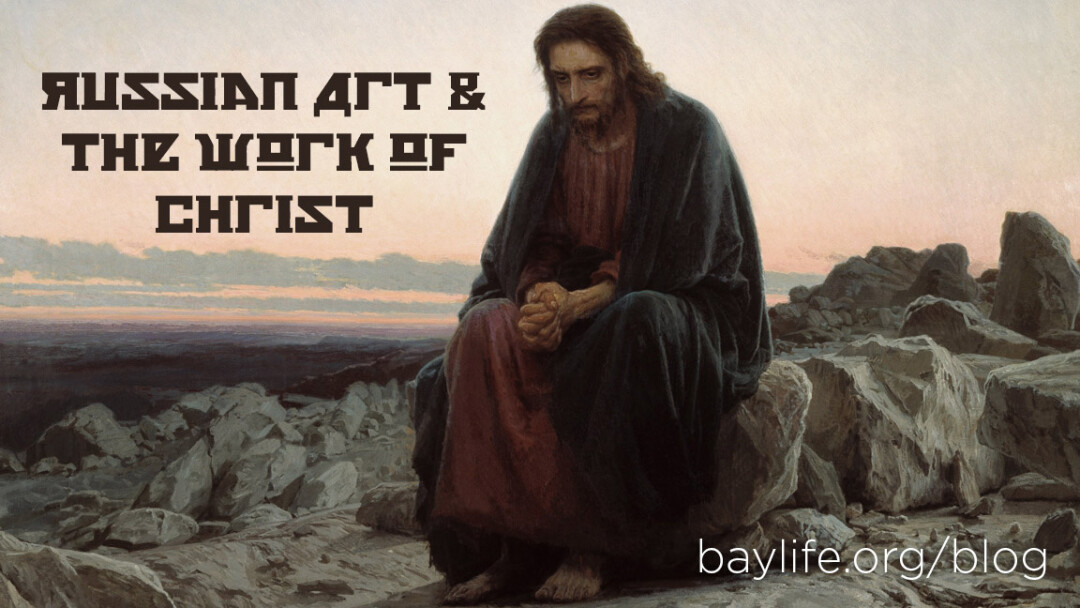
Kramskoi and Christmas
Having just survived the Christmas season, most of us probably haven't gone a day without seeing some sort of depiction of Jesus. From manger scenes to Christmas specials, we have spent the last month and a half surrounded by images of Christ. Some of them border on the absurd while others are more true to how Jesus might have looked. Out of all the artistic efforts put forth, my absolute favorite is, “Christ in the Desert,” by Russian painter Ian Kramskoi (pictured above). The image depicts Jesus in the midst of the wilderness, hands folded, eyes mournful, as he is tempted and tried (Matthew 4, Mark 1, Luke 4). For many of us, this seems like a puzzling event in the life of Jesus, and it would be perplexing if we were not given this passage in any sort of context. But as we see the events that surround this moment in the incarnation, what was once fuzzy becomes more focused.
The Wreckage of Eden
During Jesus’s baptism, the Holy Spirit descends on him, commissioning him for this new season of ministry. In this action, the Holy Spirit is fulfilling His ancient role, hovering over the waters of creation to bring about something new (Genesis 1:2). The significance of all of this was clear to the authors of the New Testament. Jesus was something of a second (or last) Adam, and through Him, God was beginning something new (1 Corinthians 15:45). As we see in Scripture, Christ, is set in the wilderness just as the first man, Adam, was. However, the wilderness is different. For Adam, there is safety, for Christ he is left to contend with, “the wild animals.” For Adam, there is an abundance of every tree save one, for Christ, there is fasting (Genesis 2:16, Matthew 4:2). For Adam, there is paradise, for Christ, there is a wasteland. Adam is given a garden; Christ is given the wreckage of that garden: a desert of death.
The second Adam is not merely left to contend with the forces of nature, but with that ancient dragon, the devil, the one who deceived the first Adam. For all of the parallels, the ending of these encounters could not be more different. The serpent’s question for Adam was, “Did God really say?” To such a question the second Adam responds, “It is written.” It’s not just Adam who found himself facing the allure of the serpent. Israel passed through the waters of the Red Sea, and they too went into the wilderness. In the desert of Sinai Israel heard the serpent’s call and crumbled into worshiping a golden statue in place of Yahweh (Exodus 32:4). Despite the promise of glory, Christ refuses to bow his knee to the accuser (Luke 4:8).
'Look Unto Jesus'
Charles Spurgeon once wrote that, if we are to overcome Satan and have peace with God, it would only be through, “looking unto Jesus.” Perhaps this is because Jesus is the only one who has ever perfectly done either of those things. We would do well to look unto Jesus, not just as our example, but as our representative. It’s he who passed the test in the wilderness that neither we, nor Adam, nor Israel ever could have hoped to. And he has done all of this for his people, and to his glory. In light of all this, I think that Kramskoi’s painting is fitting. The true Israel, the better Adam, in the wasteland of the world, carrying the weight of human failure, yet triumphing. The wellspring of life emptying himself in the midst of a desert so that his people might flourish. The Word made flesh, wandering through the wreckage of a fallen world so that we might find our way home again.
